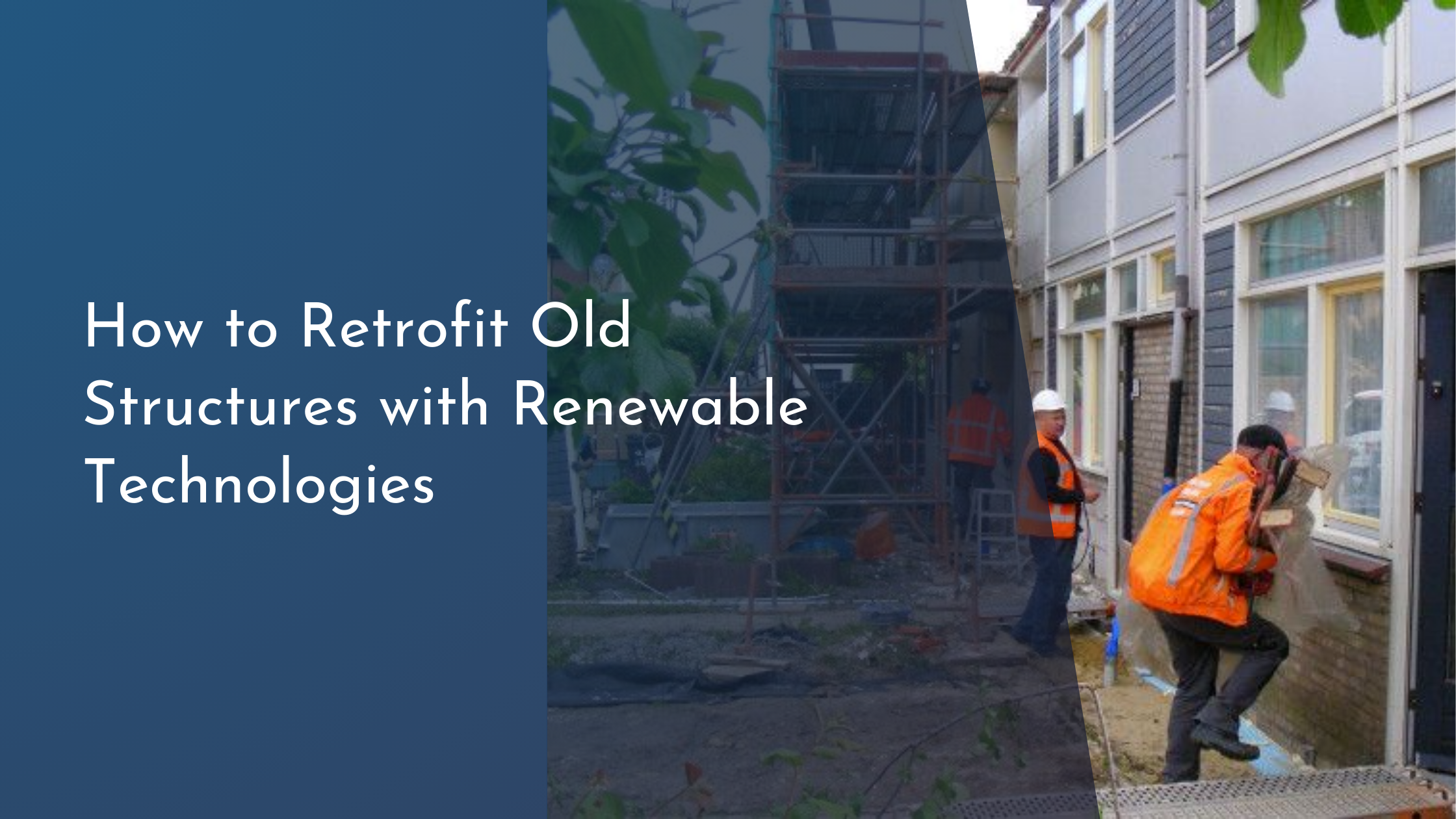How to Retrofit Old Structures with Renewable Technologies
As the global focus shifts towards sustainability and reducing carbon footprints, retrofitting old structures with renewable technologies has emerged as a crucial step in the journey towards a greener future. This process not only helps in conserving energy but also in enhancing the longevity and functionality of older buildings. By integrating new technologies into existing infrastructures, we can effectively bridge the gap between traditional architecture and modern environmental needs. This article delves into the essential aspects of retrofitting with renewable technologies, offering a comprehensive guide to understanding its necessity, selecting appropriate technologies, implementing the upgrades, and reaping the myriad benefits.
Understanding the Need for Retrofitting Structures
Retrofitting is increasingly becoming a necessity as many old structures are not equipped to meet today’s energy efficiency standards. Historically, buildings were designed with little regard for energy conservation, leading to substantial energy wastage. With climate change being a pressing global issue, retrofitting these buildings is a practical solution to significantly reduce energy consumption and greenhouse gas emissions. Additionally, updating old structures with renewable technologies helps preserve their cultural and historical value while making them more sustainable.
Moreover, retrofitting old buildings can lead to considerable economic savings. Energy-efficient upgrades can reduce utility costs, which is particularly beneficial in large-scale structures like office buildings and apartment complexes. Furthermore, retrofitted buildings often qualify for government incentives and tax breaks, providing financial motivation for property owners. Over time, the initial investment in renewable technologies pays off through reduced operating costs and increased property value.
Selecting Suitable Renewable Technologies for Retrofit
When selecting renewable technologies for retrofit, it’s imperative to evaluate the specific needs and constraints of the building in question. Solar panels are a popular choice due to their versatility and efficiency in converting sunlight into electricity. For buildings with limited roof space, photovoltaic shingles might be a suitable alternative. Similarly, the integration of small-scale wind turbines can be considered in areas with sufficient wind resources. It’s essential to assess the energy demands and geographical location of the building to determine the most effective renewable solutions.
Another viable option is the installation of geothermal heating and cooling systems. These systems utilize the earth’s consistent underground temperature to regulate building climate, offering an efficient and sustainable alternative to traditional HVAC systems. Retrofitting with energy-efficient lighting and smart building technology can further enhance a building’s energy performance. By carefully selecting the appropriate technologies, building owners can maximize the benefits of retrofitting while minimizing costs and disruptions.
Step-by-Step Guide to Implementing Upgrades
The process of retrofitting a building begins with a comprehensive energy audit. This involves assessing current energy usage patterns, identifying inefficiencies, and evaluating structural constraints. The audit serves as a foundation for developing a tailored retrofit plan that outlines the specific technologies to be implemented and the anticipated benefits. A detailed cost analysis should also be included to ensure financial viability and to plan for potential contingencies.
Once a plan is in place, the next step involves securing necessary permits and ensuring compliance with local building codes and regulations. Coordination with experienced contractors and technicians is essential to ensure the successful integration of new technologies with existing structures. During the implementation phase, clear communication between all stakeholders is crucial to address any unforeseen challenges promptly. Regular project updates and inspections guarantee that the retrofit progresses smoothly and according to the outlined plan.
Embracing the Future: Benefits of Successful Retrofits
Successful retrofits offer a multitude of environmental benefits, primarily through the reduction of energy consumption and carbon emissions. By transforming old structures into energy-efficient buildings, we contribute to a sustainable future while conserving valuable resources. Additionally, retrofitting supports the global transition towards renewable energy, aiding in the reduction of dependency on fossil fuels and promoting cleaner, greener alternatives.
Apart from environmental advantages, retrofitting also yields significant economic and social benefits. Property owners can enjoy reduced operational costs, increased property marketability, and enhanced occupant comfort. Moreover, retrofitted buildings often attract environmentally conscious tenants, enhancing community engagement and brand image. By embracing renewable technologies, we not only safeguard our planet for future generations but also improve the quality of life and economic vitality in our communities.
Retrofitting old structures with renewable technologies is not just a trend; it is a necessary step towards a sustainable and efficient future. By understanding the importance, selecting suitable technologies, and following a systematic approach to implementation, we can transform aging buildings into modern marvels of energy efficiency. The benefits of successful retrofits extend far beyond environmental conservation—they offer economic savings, enhance property value, and foster a healthier community. As we continue to innovate and advance, let us embrace the opportunity to retrofit and revitalize our world, building a brighter, greener future for all.

